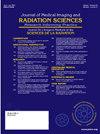使用先进的分析工具优化医疗辐射技术人员的时间表
IF 1.3
Q3 RADIOLOGY, NUCLEAR MEDICINE & MEDICAL IMAGING
Journal of Medical Imaging and Radiation Sciences
Pub Date : 2025-06-26
DOI:10.1016/j.jmir.2025.102000
引用次数: 0
摘要
简介/背景由于医疗放射技术人员(mrt)的短缺,导致等待时间增加和员工倦怠,医学成像部门正面临着巨大的劳动力挑战。传统的人工调度方法耗时长,容易出错,并导致员工不满。为了应对这些操作挑战并改善临床工作流程,开展了一项质量改进计划,利用先进的分析工具优化MRT调度。方法利用Microsoft Excel的求解工具建立成本约束优化模型。来自大学健康网络(UHN)医学影像部门的人员数据作为模型设计的基础。关键约束包括员工可用性、轮班分配的公平性、加班成本最小化和最大连续轮班。该模式包括全职、临时和代理员工,强调公平的工作分配和成本控制。结果优化后的调度模型成功地建立了一个公平的、满员的4周调度,同时最大限度地降低了成本。全职mrt每周工作40小时,不得超过合约限制,并有效整合机构和临时员工,以防止超时工作。该模型减少了生成时间表所需的时间,并最大限度地减少了重复预订和轮班分配不均匀等常见错误。讨论在MRT调度中使用先进的分析方法为医疗保健组织展示了一种实用的、可扩展的解决方案。通过将轮班分配与业务需求和人力资源原则相结合,该计划支持员工福利,促进工作场所公平,并有助于改善患者护理服务。重要的是,这种方法具有成本效益,可以适应其他面临类似人员配置和调度挑战的临床部门。结论这一质量改进举措突出了医疗保健部门利用简单而强大的优化工具来提高临床操作的潜力。分析调度模型在高容量医学成像部门的成功实施,强调了在临床实践的前沿,循证流程改进的价值。本文章由计算机程序翻译,如有差异,请以英文原文为准。
Optimization of medical radiation technologist schedules using advanced analytical tools
Introduction/Background
Medical imaging departments are facing significant workforce challenges due to a shortage of medical radiation technologists (MRTs), leading to increased wait times and staff burnout. Traditional manual scheduling methods are time-consuming, prone to error, and contribute to staff dissatisfaction. To address these operational challenges and improve clinical workflow, a quality improvement initiative was undertaken to optimize MRT scheduling using advanced analytical tools.
Methods
A cost-constrained optimization model was developed using Microsoft Excel’s Solver tool. Staffing data from the University Health Network (UHN) medical imaging department served as the basis for model design. Key constraints included staff availability, fairness in shift assignments, overtime cost minimization, and maximum consecutive shifts. The model incorporated full-time, casual, and agency staff, with an emphasis on equitable work distribution and cost control.
Results
The optimized scheduling model successfully created a fair, fully staffed 4-week schedule while minimizing costs. Full-time MRTs were assigned 40-hour work weeks without exceeding contractual limits, and agency and casual staff were effectively integrated to prevent overtime. The model reduced the time required to generate schedules and minimized common errors such as double-booking and uneven shift distribution.
Discussion
The use of an advanced analytical approach for MRT scheduling demonstrates a practical, scalable solution for healthcare organizations. By aligning shift assignments with operational demands and human resource principles, the initiative supports staff well-being, promotes workplace fairness, and contributes to improved patient care delivery. Importantly, this method is cost-effective and can be adapted to other clinical departments facing similar staffing and scheduling challenges.
Conclusion
This quality improvement initiative highlights the potential for healthcare departments to leverage simple yet powerful optimization tools to enhance clinical operations. The successful implementation of an analytical scheduling model in a high-volume medical imaging department underscores the value of evidence-informed process improvements at the frontline of clinical practice.
求助全文
通过发布文献求助,成功后即可免费获取论文全文。
去求助
来源期刊

Journal of Medical Imaging and Radiation Sciences
RADIOLOGY, NUCLEAR MEDICINE & MEDICAL IMAGING-
CiteScore
2.30
自引率
11.10%
发文量
231
审稿时长
53 days
期刊介绍:
Journal of Medical Imaging and Radiation Sciences is the official peer-reviewed journal of the Canadian Association of Medical Radiation Technologists. This journal is published four times a year and is circulated to approximately 11,000 medical radiation technologists, libraries and radiology departments throughout Canada, the United States and overseas. The Journal publishes articles on recent research, new technology and techniques, professional practices, technologists viewpoints as well as relevant book reviews.
 求助内容:
求助内容: 应助结果提醒方式:
应助结果提醒方式:


